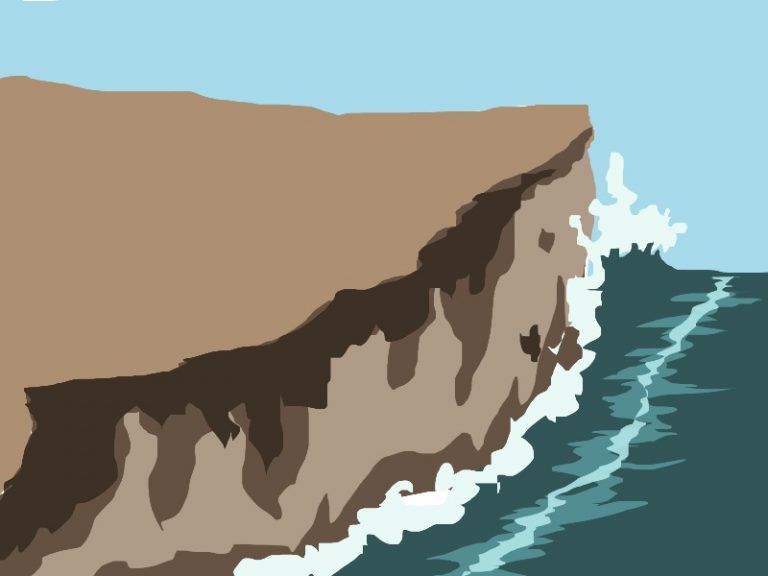
Anais Tournier
For UCSB students, cliff and beach erosion have become problems too large to ignore. The California Coastal Commission estimated that over just the the last three years, Goleta beaches have lost 53,000 square feet of land to coastal erosion, a trend that is expected continue. This coastal erosion has heavily impacted the Santa Barbara and Goleta community, damaging local shoreline parking lots, recreational areas, and Isla Vista houses.
In January 2017, the balcony of 6653 Del Playa Drive collapsed and fell into the ocean. Donna Flores, a resident in this property at the time, described the event as shocking and horrifying. Flores returned home from work to find her housemates in a panic and most of her backyard deck gone.
Although no one was injured, Flores fell two weeks behind in school work while having to search for a new house. “I was homeless and needed a new place to live,” Flores said. Her academics became second priority.
Although Flores’ experience has only happened once so far in Isla Vista, this event raises many questions. What causes erosion, how often does erosion occur, and more importantly, will erosion be an issue in the I.V. community?
According to Paul Alessio, a UCSB Ph.D candidate who studies sea-cliff erosion, waves and excessive rainfall cause erosion. At higher tides, waves crash into cliff sides and chip away the base of the bluff. As the base diminishes, it can no longer hold the weight of the overarching top and causes the cliff to fall.
Isla Vista cliffs are particularly susceptible to this type of erosion since the bedrock is composed of shale, a fragile clastic sedimentary rock, which shatters easily. When it rains, water fractures the shale, allowing it to seep into the soil and run off into the ocean. The rain water ultimately works as a lubricant and decreases the friction between the layers of bedrock. Ultimately, this causes erosion and landslides in some cases.
“This is most likely what happened on DP,” Alessio said about the collapsed balcony. However, he stated that this type of incident is uncommon. “I think people should be aware about erosion, especially after high tide and a lot of rain.” Alessio also said residents shouldn’t be worried about the safety of their house at this time.
However, Alessio said this security may change in the future. According to his own research, the Santa Barbara coast has eroded between three inches to a foot every year for the past decade. In the future, the continually receding cliff could mean some houses will have to be cut back from the cliff in order to avoid a collapse even more dangerous for residents than the one last January.
For I.V. residents currently living on Del Playa, Alessio said there are signs to look for that indicate an unstable bluff close to collapsing. If the cliff below the balcony or building appears slanted or cracks appear on the floor, the bluff is unstable and could fall soon. Flores and her housemates noticed cracks on their balcony weeks before it fell. “We called the landlord to fix [the cracks], but after [he] would repave it, it would always crack again.” Paving over the cracks only fixed the surface and hid the real problem.
Residents who notice a tilting cliff under their property or large cracks on their floor should immediately contact Santa Barbara County Planning and Development. They offer unbiased housing inspections that will determine if the property is inhabitable.










